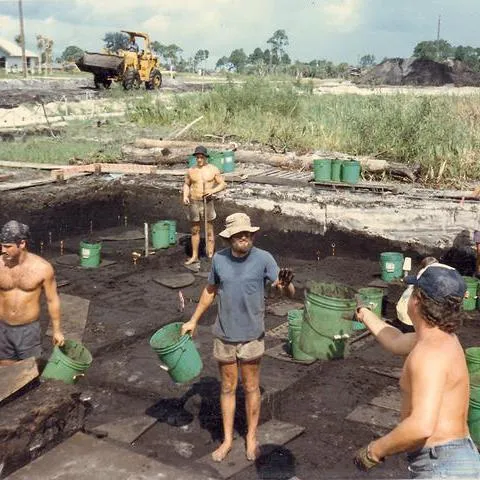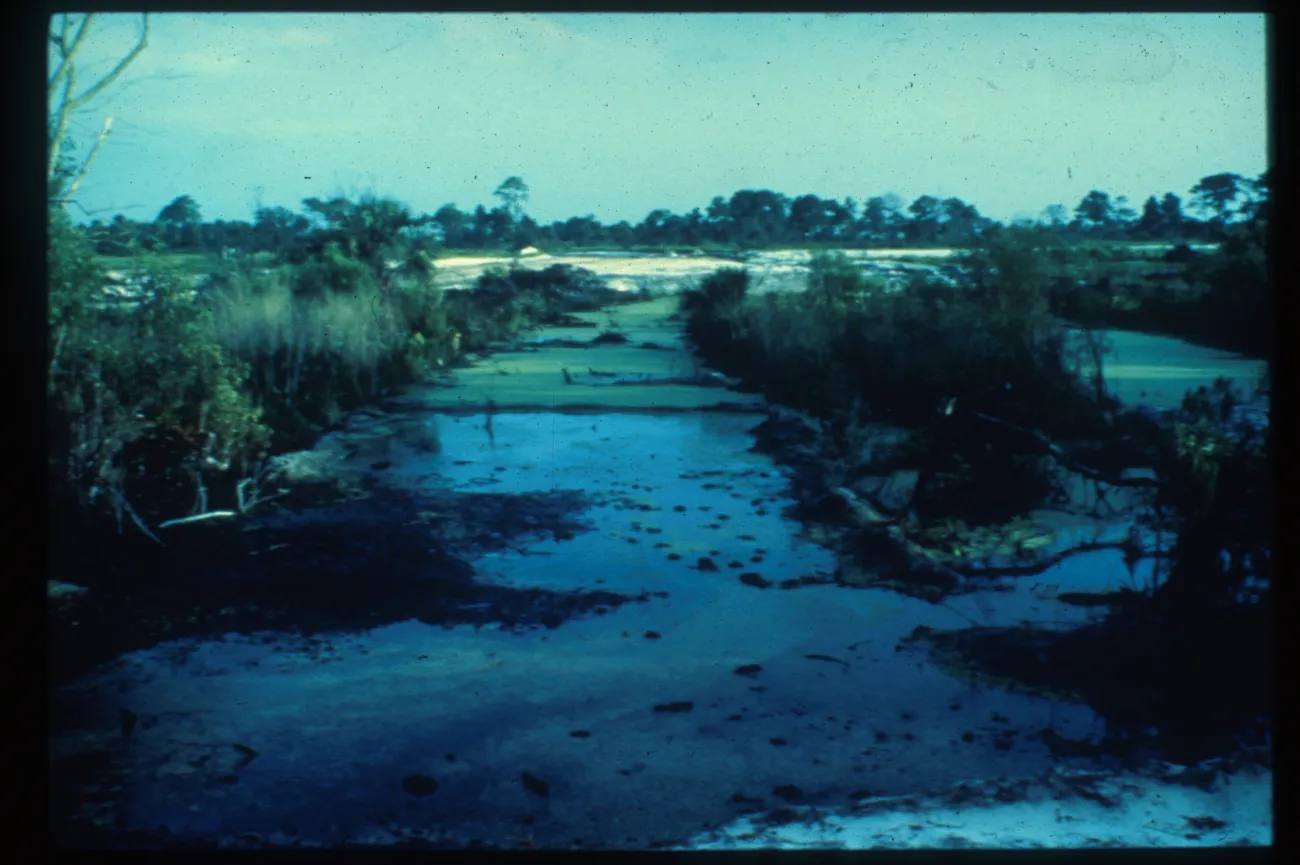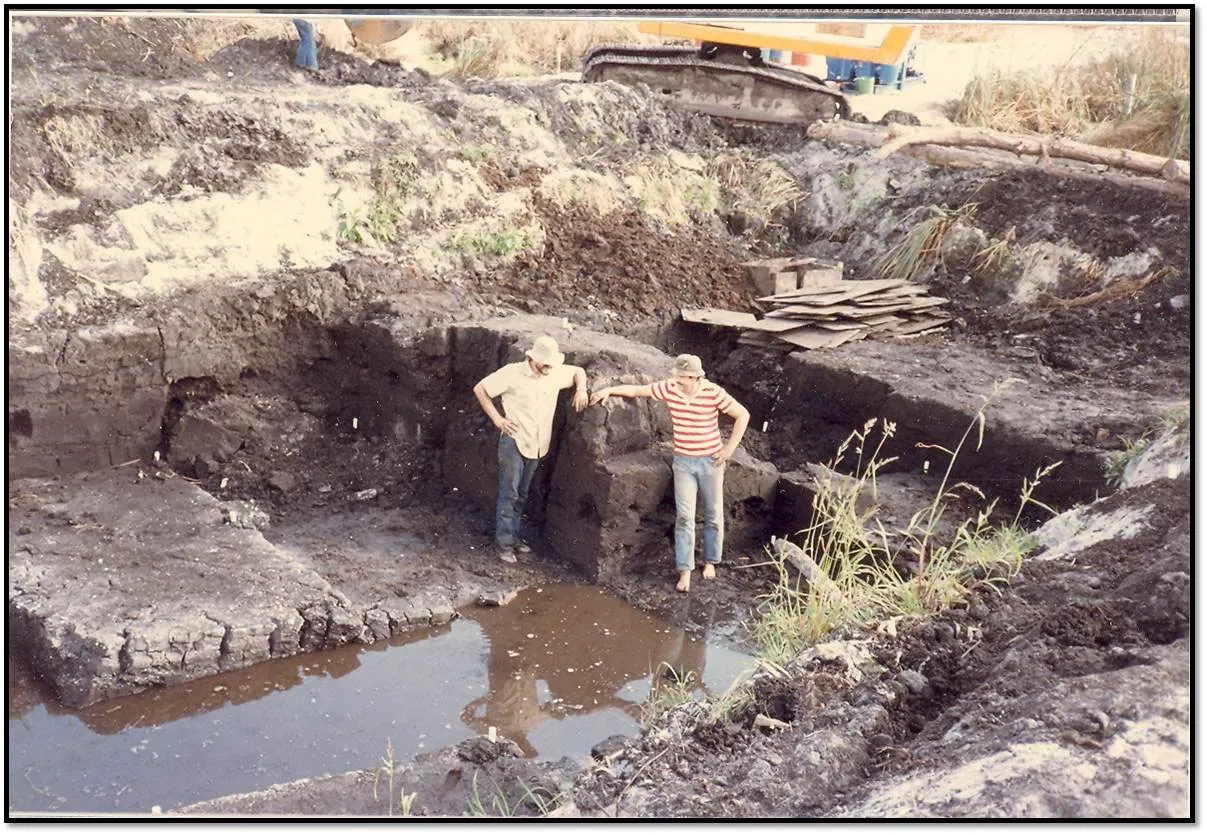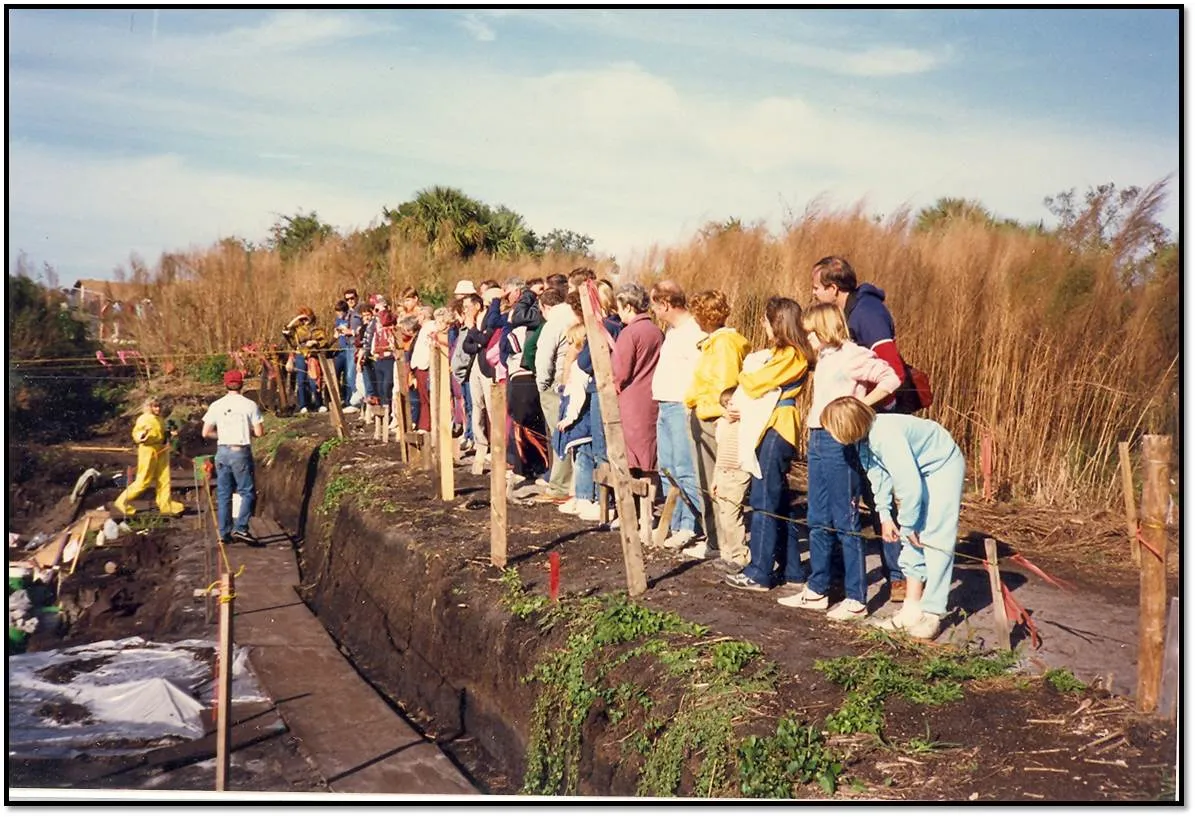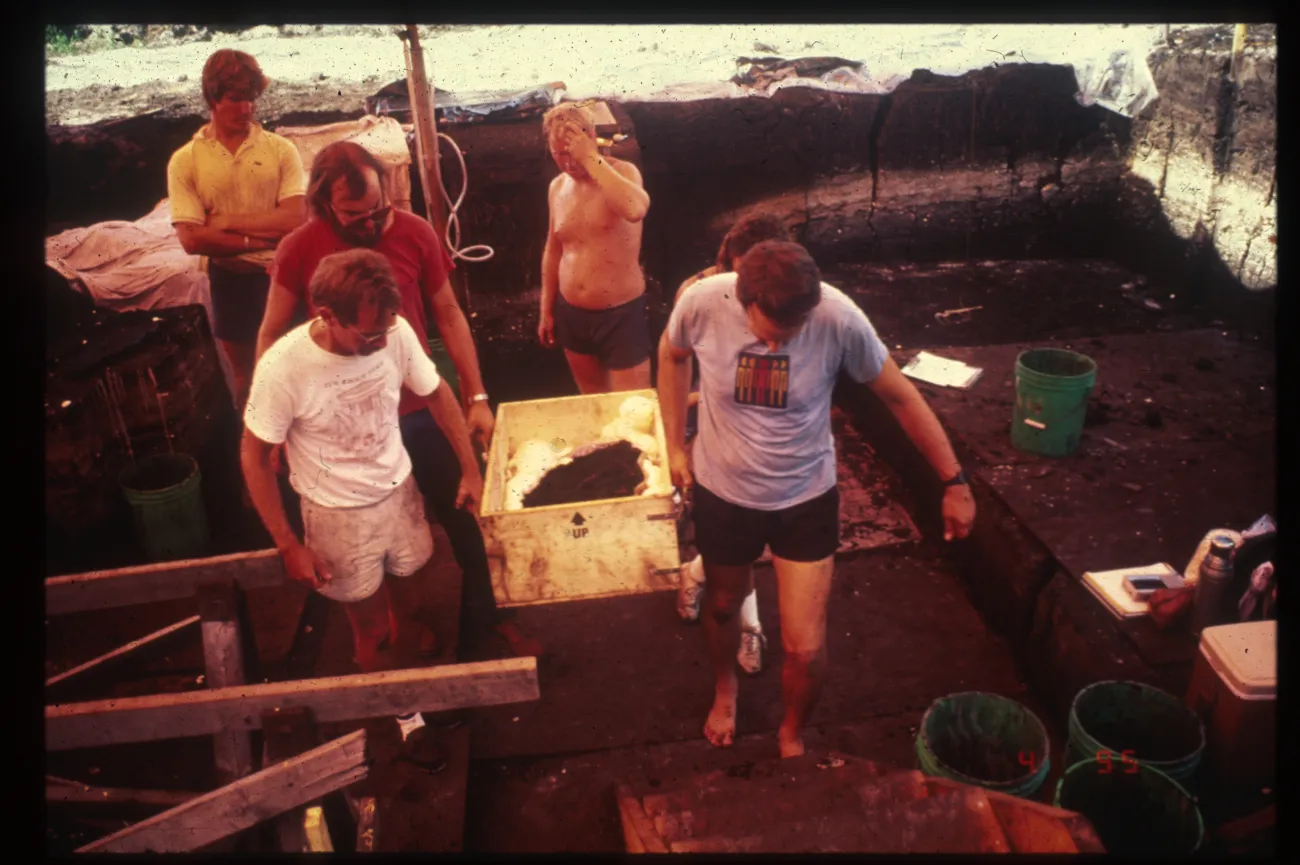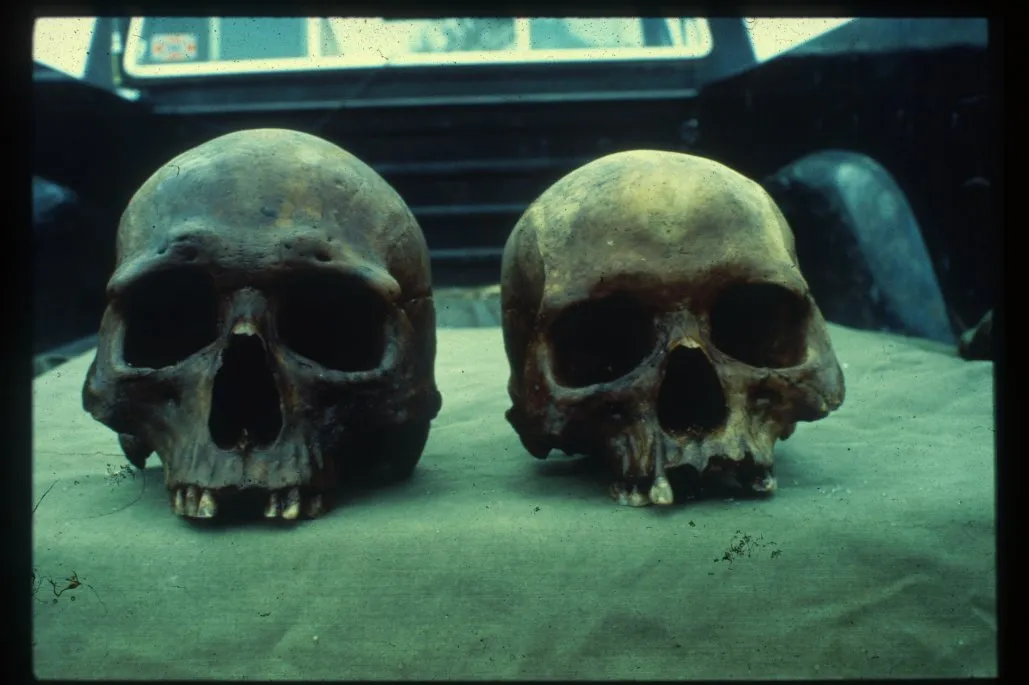Backhoe operator Steve Vanderjagt couldn’t believe his eyes. After uncovering a round, brownish object, he stopped clearing away the muck and debris to investigate further. When Vanderjagt picked up the object, the two empty eye sockets of a skull were staring back at him.
The year was 1982, and Steve Vanderjagt was working to clear the area around a pond in what would become the Windover Farms subdivision in Titusville, Florida, near the intersection of Interstate 95 and State Road 50. It was quickly apparent that the remains of several very old skeletons had been disturbed.
Jim Swann, the developer of the property, could have made the choice to quietly cover the bones and proceed with construction of his housing development, and no one would have been the wiser. Instead, Swann halted work on the site and brought in experts to determine exactly how old the newly discovered remains were, and what should be done with them.
A young archaeologist from Florida State University was called in to examine the bones. Dr. Glen Doran could tell right away that the bones were Native American, and were perhaps 1,000 years old or more. After his preliminary assessment of the bones, carbon dating was performed on them. Everyone, including Doran, was shocked by the results.
The human remains uncovered at the Windover site were between 7,000 and 8,000 years old, making them 3,200 years older than King Tutankhamen and 2,000 years older than the Great Pyramids of Egypt.
It took two years to raise the money to do a systematic excavation of the Windover site. Three archaeological “digs” were conducted at Windover between 1984 and 1986. The astounding discoveries that were made attracted international attention.
Nearly 200 separate, intact burials were excavated at the Windover site. With only a couple of exceptions, the bodies had been ritualistically buried and placed in the same fetal position, lying on the left side. The heads were pointed west, with their faces to the north. The deceased were wrapped in what archaeologists believe is the oldest existing woven fabric in the world. Several branches were lashed together to form a tripod that held each body submerged underwater, creating a pond cemetery.
The anaerobic environment of the peat bog combined with a remarkably favorable Ph balance in the pond allowed for amazingly well preserved burials. Archaeologists discovered that ninety-one of the skulls uncovered contained intact brain matter. The stomach contents of one ancient woman indicated that her last meal consisted of fish and berries. DNA tests on the ancient remains proved that the same families used the site as a burial ground for more than a century.
Other discoveries at the Windover Dig help add to our understanding of prehistoric people. The damaged and diseased condition of some of the bones indicated that incapacitated people of this tribe were cared for over long periods of time, even though they could not participate in activities essential to the survival of the group, such as hunting and fishing. Bottle gourds were used as vessels thousands of years before the creation of pottery, demonstrating that the prehistoric people of Windover were horticulturalists as well as agriculturalists. The atlatl was a tool that helped hunters to throw their spears great distances with more strength and accuracy.
Life for the prehistoric people of Florida was difficult. About half of the remains found at Windover were children, and the oldest people found were about 60. We have no way of knowing what their spiritual beliefs were, but the ritualistic burials suggest that the people of Windover probably believed in an afterlife.
Although they lived more than 7,000 years ago, the people of Windover had fully developed brains. They resembled modern people, experiencing the same grief we feel at the passing of a loved one.
To find out more about the Windover Dig visit the Brevard Museum of History and Natural Science at 2201 Michigan Avenue in Cocoa, and read the book Life and Death at Windover: Excavations of a 7,000-Year-Old Pond Cemetery by Dr. Rachel K. Wentz.
Dr. Ben Brotemarkle is producer and host of “Florida Frontiers: The Weekly Radio Magazine of the Florida Historical Society,” broadcast locally on 90.7 WMFE Thursday evenings at 6:30 and Sunday afternoons at 4:00, and on 89.5 WFIT Sunday mornings at 7:00.
